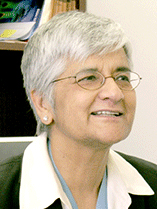Despite recent advances in medical and interventional percutaneous or surgical therapies, coronary artery disease continues to be a major cause of morbidity and mortality throughout the world.
Early detection of rupture-prone, or so-called vulnerable plaques is thought to play a central role in coronary artery disease prevention.
 Renu Virmani, MD (CVPath Institute, Maryland, USA) explained the mechanism of plaque progression, while pointing out the possibility of luminal loss occurring due to plaque rupture, hemorrhaging, and subsequent healing at an online session held at TCTAP 2021 Virtual as a winner of 11th Master of the Masters Award.
Renu Virmani, MD (CVPath Institute, Maryland, USA) explained the mechanism of plaque progression, while pointing out the possibility of luminal loss occurring due to plaque rupture, hemorrhaging, and subsequent healing at an online session held at TCTAP 2021 Virtual as a winner of 11th Master of the Masters Award.
Examination of more than 800 cases of sudden coronary death at autopsy showed 55 to 60 percent of subjects had underlying plaque rupture as the etiology, whereas for 30 to 35 percent, the etiology was erosion. The remaining two to seven percent had thrombi attributed to calcified nodules. Virmani pointed out that significantly less calcification was detected in plaque erosion compared to plaque eruption (23 percent vs 69 percent), and further shared data accrued over 40 years.
Plaque rupture is the predominant cause of death at autopsy, occurring in 75 percent of patients presenting with acute myocardial infarction diagnosed by an electrocardiogram (ECG) and enzyme elevation. In contrast, approximately 37 percent of women with acute myocardial infarction (AMI) had plaque erosion, whereas in men, erosion was present in only 18 percent.
Overall, plaque erosion appeared to be the primary cause of acute coronary thrombi in women under 50 years of age who presented with sudden coronary death. Plaque erosion occurred principally in younger individuals, especially in women with a history of smoking.
Thus, the etiology of the thrombus was dependent on age and sex, whereas plaque rupture was a dominant mechanism in men regardless of age as well as in older, postmenopausal women above 50 years of age. The underlying plaque consisted of pathologic intimal thickening or fibroatheroma although distinct morphological features of erosion-prone plaques were not identified
Calcified nodule was another substrate for thrombosis, especially in the elderly with high coronary calcification burden, tortuous arteries, diabetes, and chronic kidney disease.
The calcified nodule - recognized by calcified plates with superimposed calcified bony nodules that result in discontinuity of the fibrous cap - with an irregular luminal surface devoid of endothelial cells and overlying luminal thrombus was the underlying mechanism of acute coronary events in two to seven percent of coronary artery thrombosis and in four to 14 percent of the carotid artery thrombosis in pathological studies. Intracoronary imaging modalities were tested for their ability to identify high-risk plaques and to evaluate culprit lesions. Here, optical coherence tomography (OCT) and optical frequency domain imaging (OFDI) provided the highest resolution images and identified structures of coronary plaques in detail, although limitations remain. Novel imaging modalities are being evaluated to overcome these limitations.
Finer details of the plaque were also observed in greater detail through high-resolution micro CT on human coronary arteries obtained at autopsies. Contrast with iodine also gave greater clarity of the soft tissue and calcium. Micro CT can clearly distinguish nodular calcification from sheet calcification, which is not possible with radiography alone. Clinically, our understanding of atherosclerosis would be enhanced greatly if image quality could be improved to this level. Despite significant advances in diagnostics that range from blood testing to genetics, and imaging and hemodynamics, identifying patients and plaques at higher risk of adverse events remains limited. Nevertheless, technical, and diagnostic advances and further interdisciplinary research will provide preventive and therapeutic approaches for high-risk plaques in vulnerable patients.
Edited by

Se Hun Kang, MD
CHA Bundang Medical Center, Korea (Republic of)


